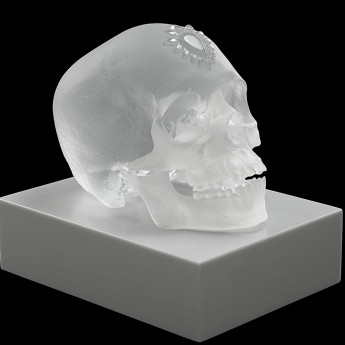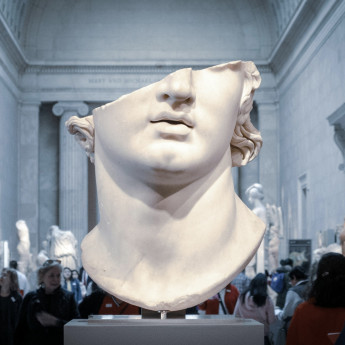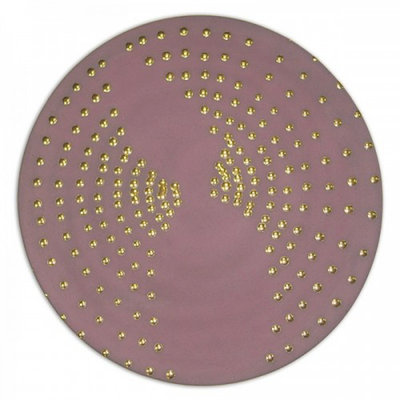


Details
Artist
Styles
Embossed prints, on Eskulan paper, with accompanying text sheet. Signed, dated, and numbered. Co-published by Dorothea van der Koelen, Mainz and Edouard Weiss, Paris. Literature: Van der Koelen, Dorothea and Martin (eds.): Günther Uecker - Opus Liber, Directory of Bibliophile Books and Works, Mainz 2007, Cat. No. L 0203, ill. pp. 507-511. Graphein VII, Reise Kadmos (2002) by Günther Uecker is an elegant embossed print that forms part of his contemplative Graphein series, created on handmade Eskulan paper. This work features a series of arcing, wave-like rows of raised dots that traverse the composition in gentle curves. The title, Journey of Kadmos, references the mythological founder of Thebes, suggesting themes of exploration, destiny, and cultural origin—qualities echoed in the quiet rhythm and texture of the print. Uecker abstains from using ink or pigment, relying instead on the tactile language of embossing, where light and shadow become the primary visual elements. The subtle gradations and spacing of the dots suggest tides, sediment layers, or perhaps topographical echoes of a mythic path. It invites viewers into a meditative space, emphasizing sensory perception and introspection. Co-published by Dorothea van der Koelen in Mainz and Edouard Weiss in Paris, the edition is limited to 120 plus additional artist’s copies, highlighting Uecker’s continued pursuit of spiritual and material depth through minimalist means.
Graphein VII, Reise Kadmos, 2002
form
Medium
Size
70 x 50 cm
- Inches
- Centimeters
Edition
Price
- USD
- EUR
- GBP
Details
Artist
Styles
Embossed prints, on Eskulan paper, with accompanying text sheet. Signed, dated, and numbered. Co-published by Dorothea van der Koelen, Mainz and Edouard Weiss, Paris. Literature: Van der Koelen, Dorothea and Martin (eds.): Günther Uecker - Opus Liber, Directory of Bibliophile Books and Works, Mainz 2007, Cat. No. L 0203, ill. pp. 507-511. Graphein VII, Reise Kadmos (2002) by Günther Uecker is an elegant embossed print that forms part of his contemplative Graphein series, created on handmade Eskulan paper. This work features a series of arcing, wave-like rows of raised dots that traverse the composition in gentle curves. The title, Journey of Kadmos, references the mythological founder of Thebes, suggesting themes of exploration, destiny, and cultural origin—qualities echoed in the quiet rhythm and texture of the print. Uecker abstains from using ink or pigment, relying instead on the tactile language of embossing, where light and shadow become the primary visual elements. The subtle gradations and spacing of the dots suggest tides, sediment layers, or perhaps topographical echoes of a mythic path. It invites viewers into a meditative space, emphasizing sensory perception and introspection. Co-published by Dorothea van der Koelen in Mainz and Edouard Weiss in Paris, the edition is limited to 120 plus additional artist’s copies, highlighting Uecker’s continued pursuit of spiritual and material depth through minimalist means.
- Recently Added
- Price (low-high )
- Price (high-low )
- Year (low-high )
- Year (high-low )
What is the Zero Movement?
ZERO was an art movement founded by Otto Piene and Heinz Mack, aiming to develop into a large international and cross-border movement. The name ZERO originated from a magazine founded by Heinz Mack in 1957, which became a platform for the group's ideas. The magazine was published for several years before ceasing in 1967. The ZERO movement sought to create a new beginning in art, emphasizing light, space, and movement, and became influential in post-war European art.







































